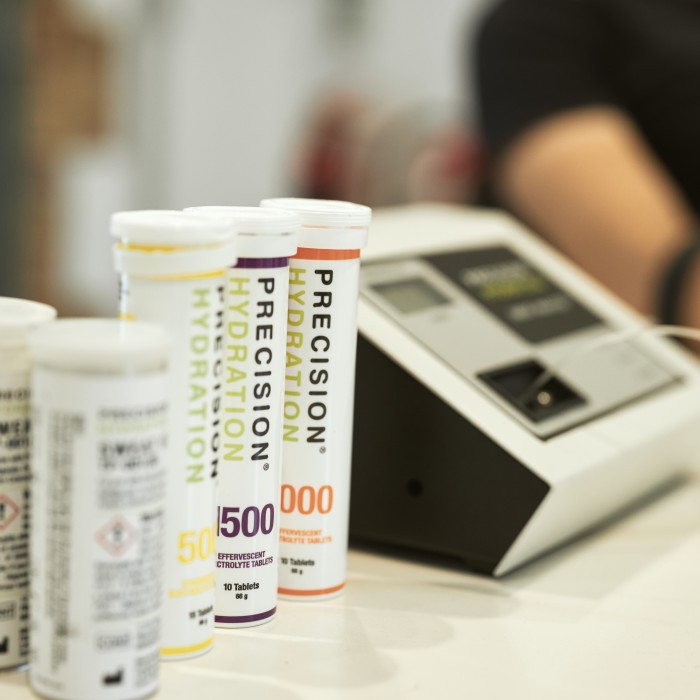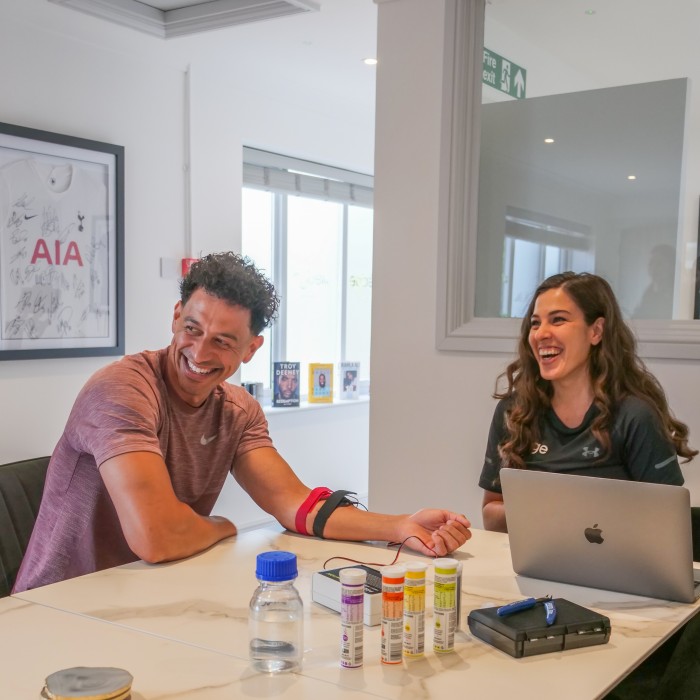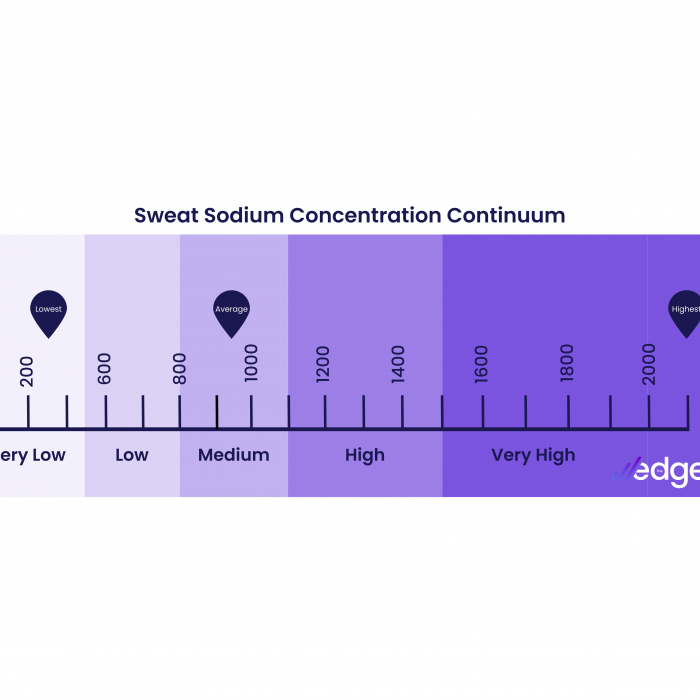Personalised hydration: What’s in your sweat and why does it matter?
By Abby Coleman BSc Pg.Dip6 Minute Read

6 Minute Read
When it comes to advice around hydration, focus is often placed on whether or not you are replacing the right amount of fluid. There’s no arguing that this is an important consideration but it’s also essential to understand that optimising your hydration strategy involves much more than this. Let me explain…
Our sweat is not just water; it also contains electrolytes like sodium, potassium, chloride, small amounts of glucose, urea, and even trace elements of copper, zinc and iron. These aren’t random substances; each component plays a crucial role in optimising your performance, both throughout the day but especially during and around exercise.
When trying to master your hydration, you should recognise that it’s a balancing act between fluid and electrolytes - sodium in particular.
You see, sodium is the main electrolyte in your extracellular fluid (all fluid sitting outside of your cells). It’s also the most abundant electrolyte lost in your sweat; playing a key role in regulating fluid balance, nerve function and muscle contraction.
When you sweat a lot, failing to adequately replace the correct amount of sodium that you lose, especially if you’re engaging in vigorous or prolonged activity, can increase the likelihood of impaired performance, dehydration, muscle cramping, and poor recovery.



What is 'sweat testing'?
Knowing how much sodium to replace starts by understanding how much sodium you lose. This is highly unique to each person, with sweat sodium concentrations varying up to 10 times between seemingly similar individuals. In other words, what you lose may be wildly different to your training partner.
For example, Person A’s sweat sodium concentration may be as low as 200 milligrams of sodium per litre of sweat, whereas Person B’s losses may exceed 2,000 mg per litre of sweat.
In this instance, Person A would be classed as a low salt sweater, whereas Person B would be classified as a high salt sweater. Both would be provided with totally different hydration strategies; personalised to their individual requirements.
With sweat composition varying from person-to-person, hydration shouldn’t be viewed as a ‘one-size-fits-all’ approach and that’s where our Advanced Sweat Test has proven incredibly beneficial.
Sweat testing is an invaluable tool for removing the guesswork and helping you understand a huge part of the hydration equation. The testing itself is a sit-down affair (no exercise required!) and is conducted by applying a harmless chemical called pilocarpine to your forearm using a mild electrical current. This stimulates your sweat glands into perspiring. Your sweat is then collected by a coil of tubing within a macroduct, before being removed and analysed for its sodium concentration there and then.
It’s simple, painless and takes around 40 minutes. Thanks mainly to genetics, sweat sodium concentration stays mostly stable after infancy, which means you only need to do the test once (solid bang for your buck if you ask us!).
Are you a salty sweater?
You may now be wondering whether you fit into that 'salty' category? Whilst it can’t be said for certain without a sweat test, those with higher sweat sodium concentrations typically experience the following:
If any of the above resonates with you, reach out to our expert team for a chat about sweat testing.
Crafting a personalised hydration plan
Having undertaken the sweat test and determined your unique sweat sodium concentration, your practitioner will gather some information about how you sweat, train and (where relevant) compete. Using this, they will then walk you through your personalised hydration strategy that includes electrolyte recommendations that are matched to your individual requirements.
At The Edge HPL, we’ve performed sweat tests on hundreds of individuals ranging from elite level athletes right through to dedicated amateurs and adolescents. Interestingly, we’ve found that the average sweat sodium concentration is ~1,000 mg per litre of sweat and yet many ‘off-the-shelf’ electrolyte tablets provide less than 300 mg of sodium. It’s therefore more than reasonable to think that many people are being short-changed by their electrolyte replacement strategy (i.e. you may not be replacing as much as you need!).
Is a sweat test for you?
Whether you’re an elite athlete pushing the envelope of human performance or a fitness enthusiast looking to optimise your health and fitness, sweat testing is incredibly helpful in understanding your specific hydration needs. Losing too much sodium through sweat without adequately replacing it can impair your energy, performance and recovery.
Here’s what our Advanced Sweat Test will provide you:
To enquire about Sweat Testing at our private facility in Surrey, UK please click here.
The Edge HPL is not responsible for any specific health or allergy needs that require supervision nor any adverse reactions you may have to the advice we provide - whether you have followed them as written or have modified them to suit your dietary requirements.
Any nutritional advice and information provided by The Edge HPL is based on our own experiences, research and knowledge. The information provided is not to be used in place of proper medical advice. The Edge HPL and its employees and representatives are not medical professionals, do not hold any type of medical licenses or certifications and do not practice medicine. If customers have any medical questions regarding any advice or information provided by The Edge HPL, they should consult their physician, or another healthcare professional. Please also refer to our Standard Business Terms and Conditions, which can be found on our website.